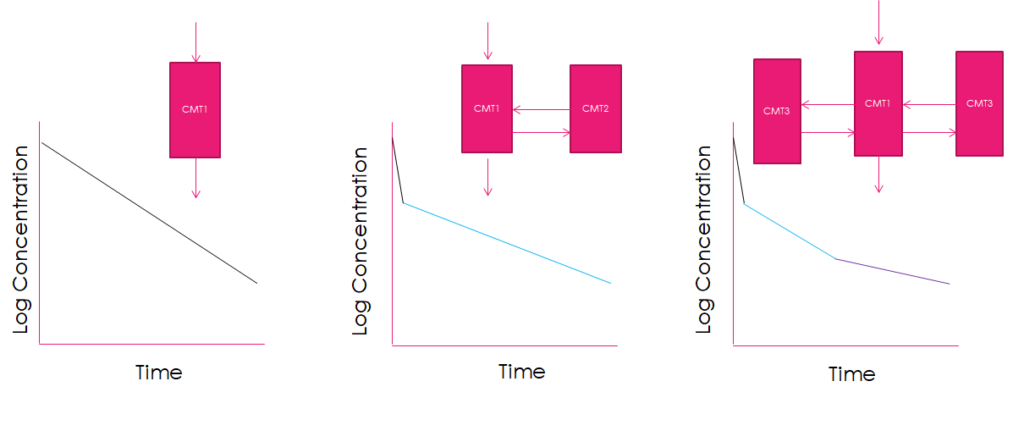Compartmental Models
In a non-compartmental model we assume the person to be like a well-stirred beaker. The entire dose is considered equally distributed through the body. Most drugs do not distribute evenly throughout the body and may preferentially distribute to different organs or tissues.
If we think about what happens when we take a drug, after the drug reaches the systemic circulation, it could undergo first order elimination from the systemic circulation via the kidneys and or liver. A lot of drugs will distribute to tissues, which could also potentially be their site of action.
Drug distribution is usually a dynamic process and concentrations in tissues will distribute back into the systemic circulation with time. Therefore, a compartmental model can represent hypothetical “compartments” that are also well-stirred. The compartments are not necessarily referring to particular organs such as the heart, liver, brain etc., but rather groups of tissues that can account for the distribution of drug.
If in addition to a shallow compartment, some compartments take longer to clear, they could be termed as deep tissue compartments and may result in a model with multiple compartments. Compartments in a compartmental analysis do not represent a particular organ such as liver, heart, brain etc.

One Compartment Model
For a one compartment model, drug is administered or input into the central compartment or CMT1. The drug is evenly distributed within this compartment and eliminated directly from CMT1.
Two Compartment Model
For a two compartment model the drug is also administered or input into the CMT1, from there it can distribute to a second compartment. Drug that enters into CMT2 can also distribute back into CMT1. From CMT1, drug can also be permanently eliminated. During the distribution phase you could observe a steep decline in concentration as in the center figure above.
Three Compartment Model
For a three compartment model you might have a shallow compartment CMT2 and a deep compartment CMT3 from which drug can distribute from CMT1. Distribution of drug to the shallow compartment will show rapid decline in concentration, followed by a shallower distribution into the deep compartment. Once the compartments reach equilibrium, the drug concentration will decline following the elimination rate from CMT1.
Summary
Compartmental modeling allows us to mathematically fit the concentration data. Depending on the purpose of analysis, compartmental modeling can be used to inform further drug development.




